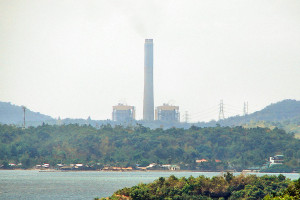The Philippines Promises Reduction in Carbon Emissions
The Philippines submitted its Intended Nationally Determined Contributions (INDC) to the U.N. earlier on Thursday, in which it pledged to cut carbon emissions by 70% by 2030. A country’s INDC represents its individual plan to reduce its post-2020 emissions in a collective effort to prevent global temperatures from rising more than 2 degrees Celsius above pre-industrial levels. President Benigno Aquino approved the submission last week before the highly anticipated annual Paris climate talks in December.

According to the Philippines’ INDC, the carbon reductions will come from the country’s energy, transport, waste, forestry, and industry sectors. Commissioner Herherson Alvarez of the Climate Change Commission argued that, “since private industry will bear the brunt of cutting emissions, there is a need for total transparency in order to build responsibility, trust, and accountability with all stakeholders.” Notably absent from the list was the agricultural sector, even though it is the country’s second largest source of carbon emissions.
The INDC also established that the pursuit of the emissions reductions would be conditional on the “extent of the financial resources... that will be made available to the Philippines.” These financial resources, if received, will be used to enhance the country’s “adaptive capacity,” as Climate Change Commission Secretary Lucille Sering described. These adaptations include strengthening institutional systems in order to downscale climate change models, develop climate-resilient ecosystems, and provide for disaster-resilient social and economic growth.
Though the country only emits 0.3 percent of the world’s carbon, it happens to be one of the most vulnerable nations to natural disasters and climate change. In the 2012 World Risk Report, the Philippines was ranked third of 173 countries in terms of natural disaster risk. The devastating impact of Typhoon Yolanda, which claimed over 6,000 lives in 2013, further demonstrated the country’s vulnerability to natural disasters.
The country’s susceptibility to climate change has subsequently made its INDC “greatly awaited” in the international arena. Its promised reductions represent a significant step in reaching the manageable global temperatures set forth by the 2009 UN summit in Copenhagen, a goal which requires the cooperation of both wealthy nations and developing nations like the Philippines.
